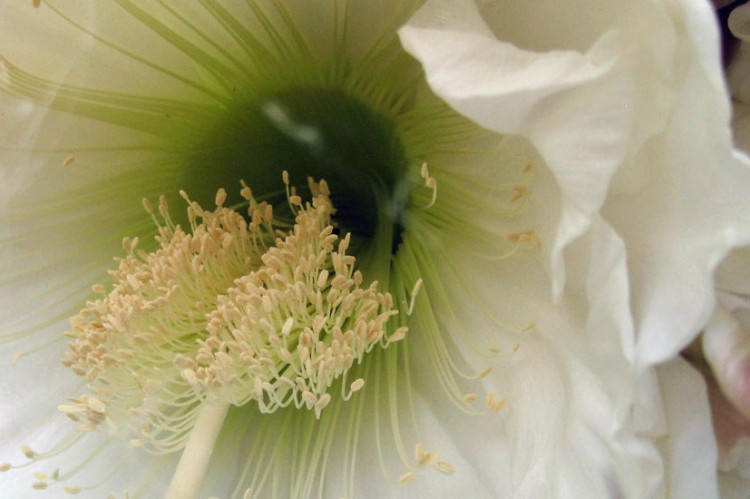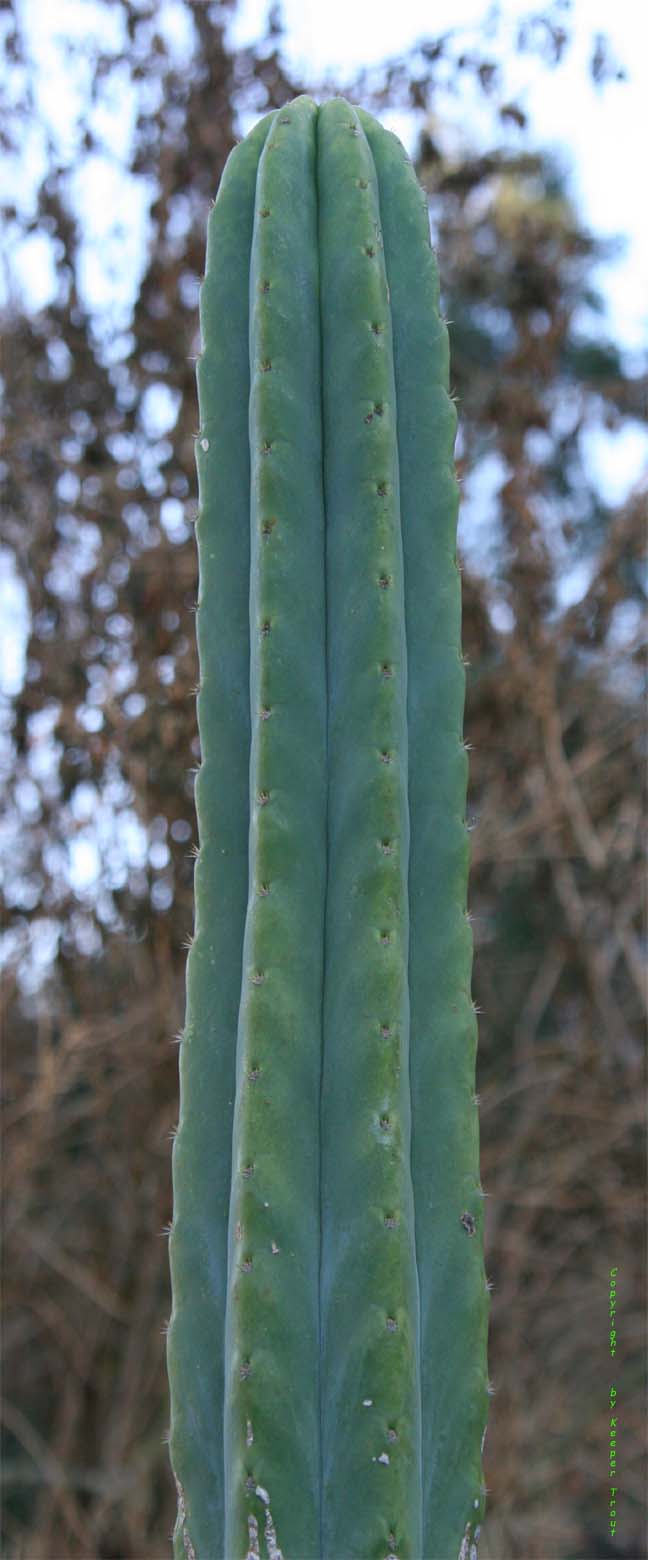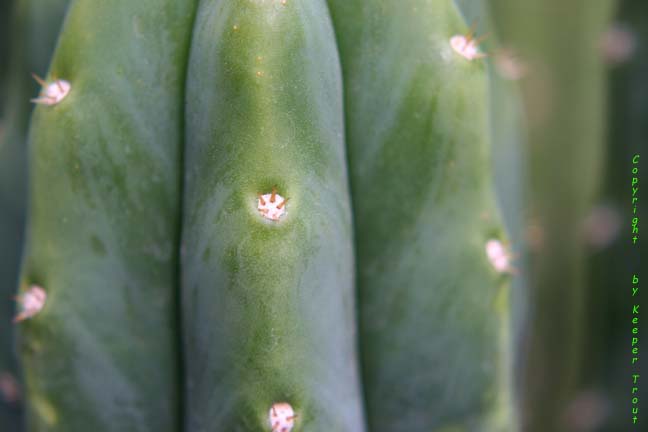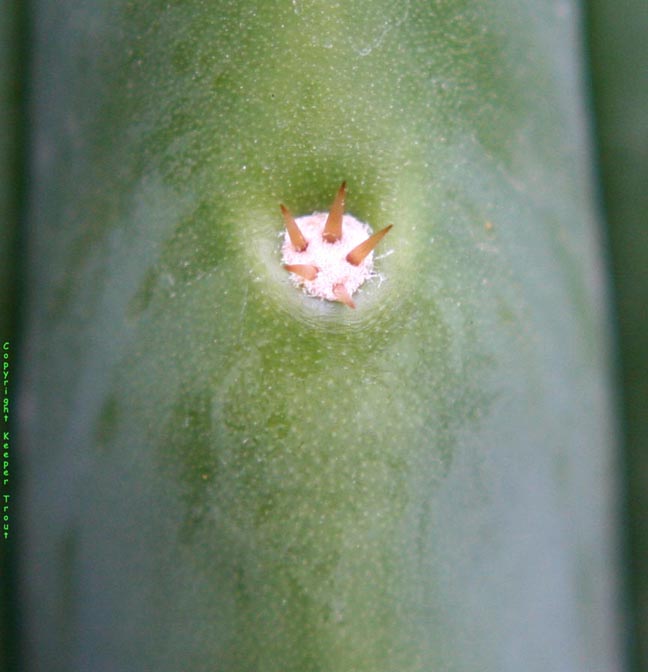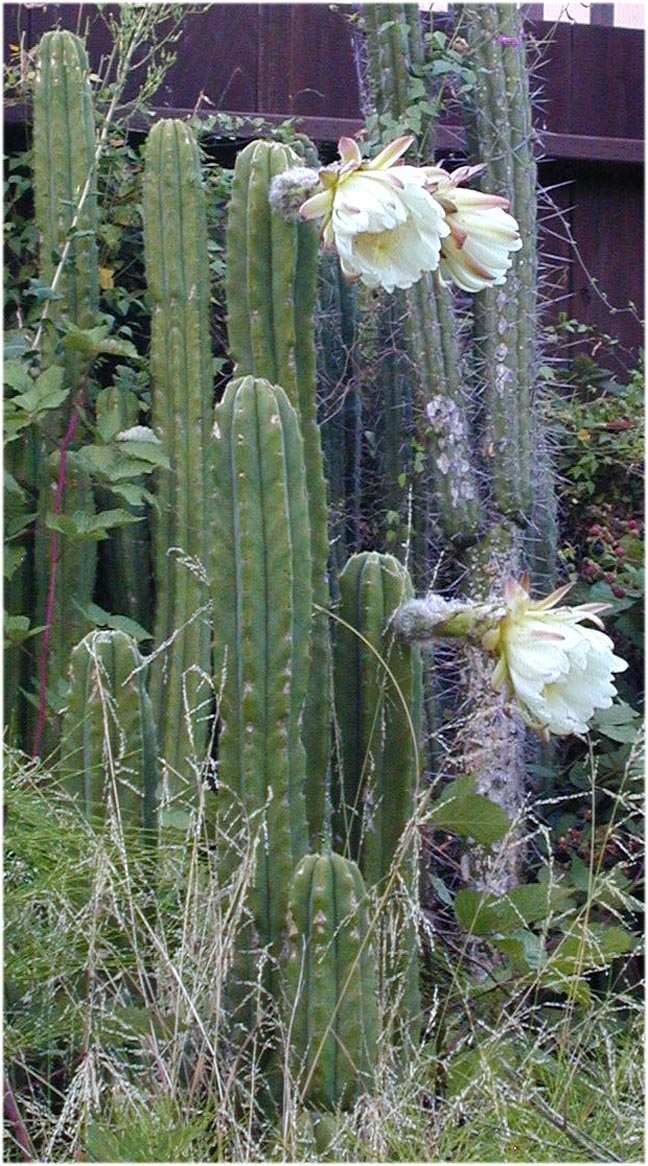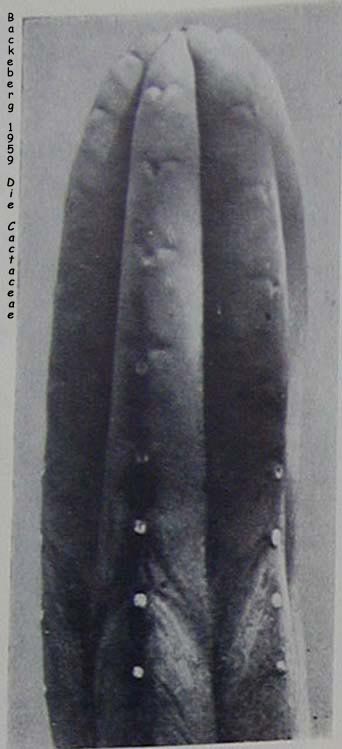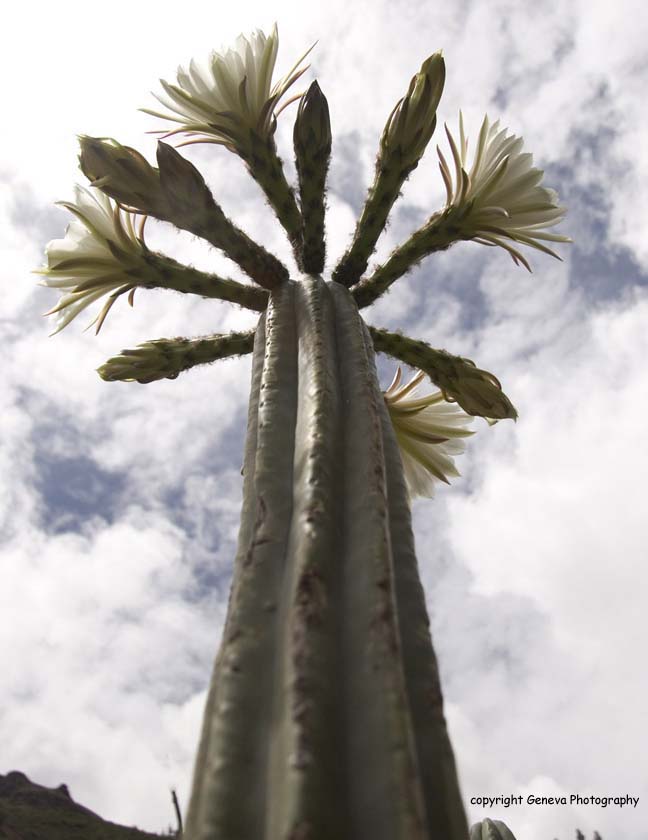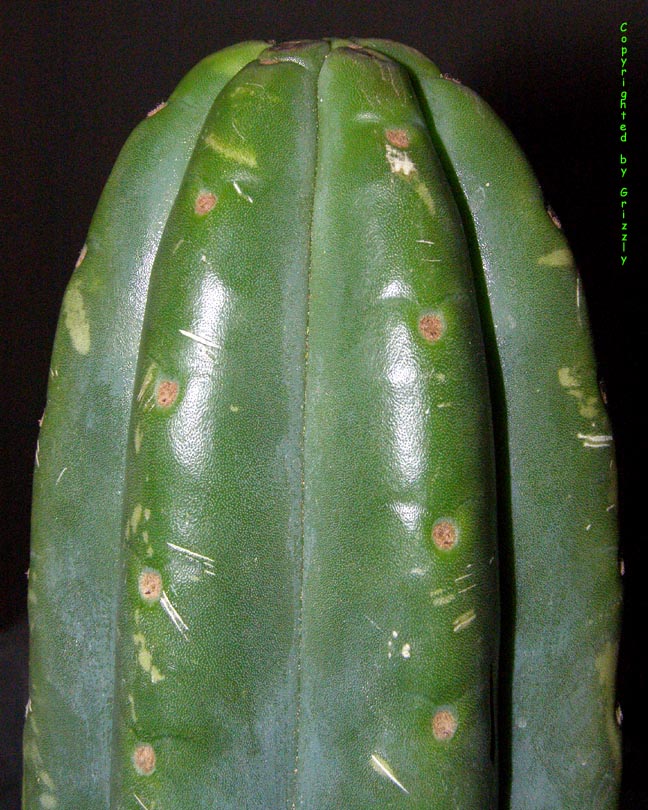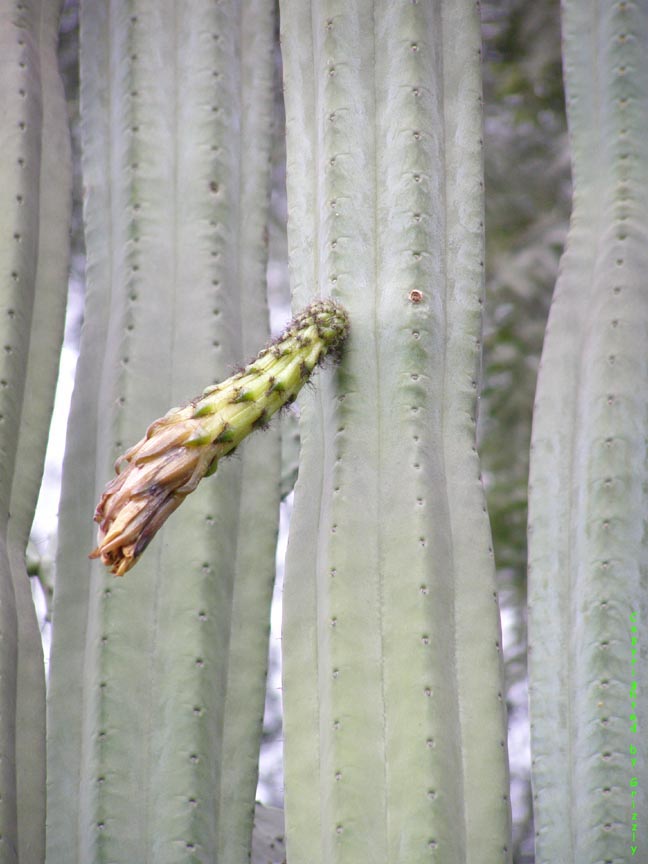Or more specifically why “Backeberg’s clone” is mythology
I unfortunately have helped to widely propagate this mistake (now an established urban legend) in print by including it in my books Sacred Cacti and San Pedro.
What most people refer to as Backeberg’s clone is the predominate cactus sold as Trichocereus pachanoi in US horticulture.
We have all no doubt seen many thousands of feet of it growing in countless people’s gardens in multiple states.
It is even featured in the very center of the front cover of the Trout’s Notes book San Pedro which has an entire section of photographs more or less devoted to it.
While the search is still ongoing and far from complete, thusfar I can find no proof that this plant is known from the wild.
Just to be sure that our subject is clear, here is an example or three (all are in California):
And a close-up of a fairly typical tip.
And of a fairly typical areole.
And another picture showing a flowering plant that is still growing at the former site of Carl Eltzner’s cactus nursery in Oakland.
This on the other hand is Backeberg’s actual photograph of a bona fide Trichocereus pachanoi taken from his 1959 Die Cactaceae. (Backeberg encountered this plant in Peru.)
The differences are both subtle and not so subtle.
Whatever the pachanot turns out to be it is clearly not the same creature that Backeberg shows here. For those not yet convinced please bear with me and check out some more images of bona fide pachanoi.
This next image is a bona fide pachanoi growing in shaman’s garden near Cuzco, Peru (Photo copyright Geneva Photography; reproduced here with permission.)
Notice how nicely this matches Backeberg’s photo and how different it is from the predominate cultivar in the USA?
This preceeding image will reappear with more comments elsewhere here but I wanted to have a copy here for ease of comparison with the other images on this page.
This next shot shows a close-up of a tip of a Peruvian pachanoi (the shininess is due to this tip cutting having been handled excessively).
For more of what appears to be the same thing
but obtained through an unrelated source
.
For a closer view of more of the same but
from Ecuador via yet another unrelated source.
Another view of another bona fide Trichocereus pachanoi in Peru.
Both photographs above are copyright Grizzly.
Just to be sure that no one forgets that pachanoi can be variably spiny.
We will be exploring this subject in more detail but could summarize this by saying that the plant now mistakenly called Backeberg’s clone (namely our pachanot) is not the same plant Backeberg recognized as pachanoi at Huancabamba and claims to have brought into horticulture in Germany in 1931.
I have some questions about this latter claim as well as it appears that pachanoi may already have been *in horticulture in the USA* by, if not well before, 1930 and it does not appear that anyone in Europe or elsewhere preserved any knowledge of which European pachanoi might have come from Backeberg.
All photographs are © copyright by their photographers.
Photos are by Keeper Trout except where indicated otherwise.
Use your back button to return.
To go back to the article:
“pachanoi or pachanot?“
-
Smith’s observations
with excerpts from some published descriptions. -
Topic 1: Backeberg’s clone (Your present location)
-
Topic 2: pachanoi compared to pachanot.
Additional material to ponder:
Copyright © by Keeper Trout

